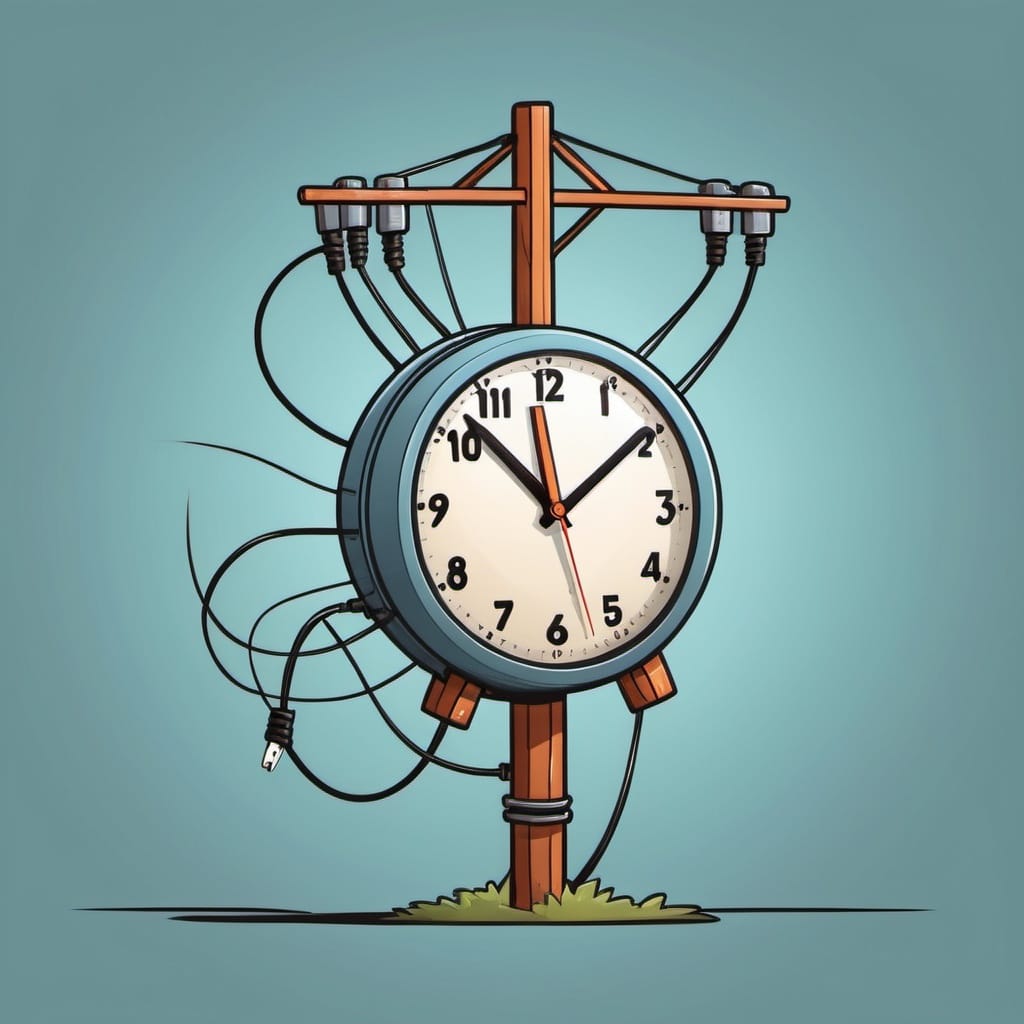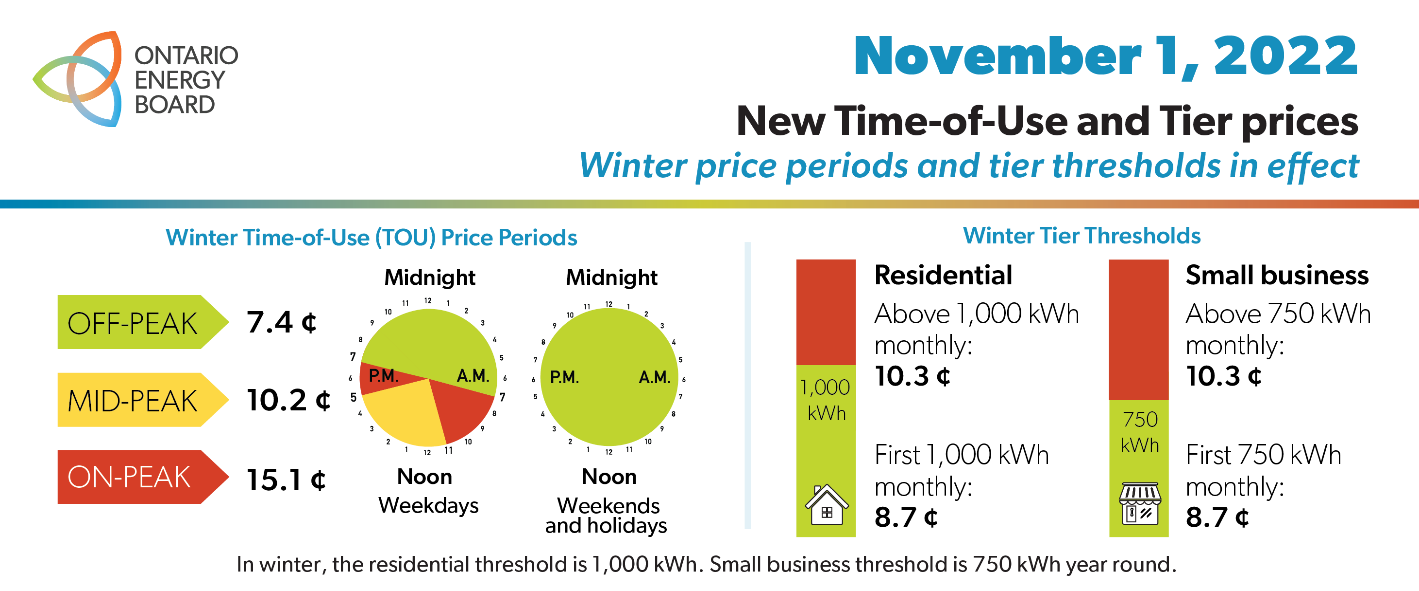Tiered rates vs Time of use

This may not be applicable to every province but I live in Ontario where 96% of people are on time-of-use (TOU) even though tiered pricing has been offered for the last 20 years. I just assumed (probably like everyone else) that TOU was best but just over a year ago I switched to tiered and was surprised by the results.
tldr; I'll save you some time, if you use less then the average Ontario consumption of 800kWh/month then tiered rates are probably better
Growing up I have vivid memories of my mom meticulously planning her day around hydro rates, when to do the laundry, when to turn the AC on/off, even avoiding turning lights on. I took these habits with my to university where me and my roommates did everything we could to push our consumption to off-peak. To this day running the dryer during the day feels unnatural but now that Im in my own house paying my own hydro bill I am questioning was my mom right?
Why do different rates exist?
Before going further we need to discuss why TOU rates and tiered rates exist.
Generally peak demand on the grid is in the afternoon/early evening, TOU rates gives customers an incentive to shift any consumption they can early/later in the day and they will be charged a lower rate. The goal of TOU rates is to smooth out demand on the electrical grid to reduce spikes in consumption and the gap between lowest and highest consumption.
So if TOU rates encourages more efficient use of the grid why does tiered exist? Well in many places tiered rates exist because the infrastructure isnt sophisticated enough to accurately track hourly consumption of a specific customer (for instance Nova Scotia only started installing smart meters in 2019), alternatively it could be that peak demand of the people being served by the grid is small relative to the capacity that the grid doesn't yet need to smooth demand (for example Quebecs grid is 90+% hydro power such that they could easily modulate it to serve consumption).
Which plan is the best?
In Ontario residents have had the option for tiered or time-of-use (TOU) rates for the last 20 years, approximately 96% of Ontarians use TOU rates which would seem to indicate they are the best right? Maybe not.
One explanation for why such a high proportion of Ontarians choose TOU is default effect, people could just overestimate their overall usage and the savings available, or it maybe people simply don't know how much power things use and underestimate how much consumption they use during peak hours.
To start lets consider that the average Ontarian uses 9500kwh/year which is an average of 800kwh (keep in mind that most Ontarians use natural gas for heat so this will be less in the winter and more in the summer).

You can substitute your own energy rates and average usage
Tiered: if we take the average of 800kwh that means on in the winter your consumption charges would be $69/month and in the summer it would be $73/month.
TOU: If you could somehow have 100% of your consumption off-peak (practically impossible) then your consumption charges would be $59/month.
As you can see above the maximum savings you could possibly have on TOU is $10-14/month (+HST). If we take the worst case scenario of 100% on-peak usage then your consumption charges would be $120/month, this means TOU gives you an upside of ~$12/month (100% off peak) but a downside of $50/month (100% on peak). TOU rates are a resonable choice if you have high confidence that you are capable of getting below the break even of rates, so lets calculate what that percentage is.
TOU break even
In a month there are 730 hours, of those hours 470 hours (~64%) are off-peak, 130 houre (~18%) are mid-peak, and 130 hours (~18%) are on-peak. This means that your average rate for "persistent consumption" (ie things you cannot shift like fridge, freezer, air handler, appliance phantom draw) is $0.093/kwh which is more expensive then tiered meaning that you must compensate for any of your homes persistent draw with offset demand draw.
You can use a maximum of 30% of your consumption outside of off-peak (15% on-peak and 15% mid-peak). If you have an average consumption of 800kwh/month that means 120kwh/month in each band, lets see how much consumption that is:
Oven uses ~3kw/h, if you use your oven for 1 hour per weekday on-peak thats 65kw/month on peak, if you use a single stove element for 30 minutes aswell that increases our total to 80 kWh/month, this leaves 40 kwh for everything else. Even if we assume a standard 9-5 job such that mid peak is 20 kwh/month (ie fridge, phanton draw, etc) that means your total budget for on-peak energy consumption is 200kwh/month (25% of consumption).
With realistic consumption our $~12/month "best case" savings with TOU rates is now looking more like $8/month and if you have higher persistent draws like a 2nd freezer, mini-fridge, dehumidifier, or literally any HVAC use outside of off-peak then that will start eating into your $8/month of savings. Hope you don't forget to move your laundry into the dryer before bed or there goes 5-10% of your savings.
Now if your monthly consumption is higher then the average of 800kwh/month then your margin for savings is greater, for example if you use 1200kwh/month then your savings could be $10-20/month and the odds that you have loads that are easier to shift are higher as you may have an plug-in hybrid or do lots of laundry. It could also be worth it for you to switch your plan over in the summer/winter as your consumption might vary drastically if you have natural gas heating for example.
Introducing ultra low off peak (ULO)
Now you might be thinking "hey! Didn't Ontario Hydro just release new ULO tiers, what about those?". The short answer is "maybe". For ULO rates there is a new overnight rate from 11pm-7am (1/3rd of the 730 hours per month) but increases the average rate outside off-peak from $0.126/kwh to $0.145/kwh and reduces the number of off-peak hours per month from 470 hours to 383 hours (23% reduction).
I could see ULO rates being very good if you have an EV that you use quite alot, many EVs have batterys of 60-100kwh capacity and can be automated to charge overnight offering a easy way to reliably shift a large portion of your consumption. If you have a gas furnace + heatpump and thermostat that allow switching between the 2 sources based on time/day of week then it also could be good. If you don't have an EV or heatpump though it is really hard for me to see how you could reliably shift the necessary portion of your consumption into the 383 weekend/overnight hours per month. Another possible angle for ULO is if you have rooftop solar that only offset a portion of your total consumption, I will be thinking about this and write an article if this ends up making sense.
Conclusion
Unfortunately there is no single rule but I think its safe to say that for many people tiered rates are likely similar if not better then TOU rates unless you have significant loads that you can reliably shift into the off peak times.
